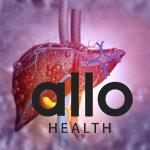Can Vitamin D Kill HPV?

Allo Health is dedicated to personalized well-being, offering support and trusted information tailored to individual health goals. The platform emphasizes human-generated content, led by a distinguished medical team of experts, including physicians and sexual health specialists. Their commitment to credibility involves rigorous fact-checking, authoritative research, and continuous updates to ensure accurate, up-to-date information. Allo Health's unique approach goes beyond conventional platforms, providing expert-led insights and a continuous commitment to excellence, with user feedback playing a crucial role in shaping the platform's authoritative voice.

Dr. Raj. R holds an undergraduate medical degree from the Philippines, and has a bachelors background in Psychology. His experience working in the field of urology further brought his interest forward in working towards his passion of understanding the science of attraction, intimacy, sex and relationships. A key motto he practices by remains unprejudiced and non-judgemental care.
Why This Was Upated?
Our experts continually monitor the health and wellness space, and we update our articles when new information became available.
Updated on 06 January, 2024
- Article was updated as part of our commitment to diversity, equity, and inclusion.

"The following blog article provides general information and insights on various topics. However, it is important to note that the information presented is not intended as professional advice in any specific field or area. The content of this blog is for general educational and informational purposes only.
Book consultation
The content should not be interpreted as endorsement, recommendation, or guarantee of any product, service, or information mentioned. Readers are solely responsible for the decisions and actions they take based on the information provided in this blog. It is essential to exercise individual judgment, critical thinking, and personal responsibility when applying or implementing any information or suggestions discussed in the blog."
When it comes to sexually transmitted infections (STIs), HPV is one of the most common. It’s estimated that nearly all sexually active adults will contract the virus at some point in their lives. While most cases of HPV will not cause long-term health concerns, some strains of the virus can lead to cancer.
What Is HPV?
Human Papillomavirus (HPV) is a group of related viruses that can infect the genital area, as well as the mouth and throat. There are more than 200 different types of HPV, and they are categorized into low-risk and high-risk types based on their association with cancer.
- Transmission: HPV is primarily transmitted through intimate skin-to-skin contact. The most common form of transmission is through sexual activity, including vaginal, anal, and oral sex. It can be spread even if the infected person does not have any signs or symptoms. Condoms and other barrier methods can reduce the risk of transmission but do not eliminate it entirely, as HPV can infect areas that are not covered by a condom.
- Types of HPV:
- Low-risk types: These types are not associated with cancer but can cause genital warts. Types 6 and 11 are the most common low-risk types.
- High-risk types: These types can lead to the development of cancer. Persistent infection with high-risk HPV is a major cause of cervical cancer. Types 16 and 18 are the most common high-risk types, but there are several others.
- HPV and Cancer:
- Cervical Cancer: Persistent infection with high-risk HPV, especially types 16 and 18, is the leading cause of cervical cancer.
- Other Cancers: HPV is also linked to cancers of the anus, penis, vagina, vulva, and oropharynx (the back of the throat, including the base of the tongue and tonsils).
- Symptoms:
- Many people with HPV do not experience any symptoms and clear the infection on their own.
- Genital Warts: Some types of HPV can cause visible warts on the genital and anal areas. These warts may be flat or raised, single or multiple, small or large.
- Prevention:
- Vaccination: HPV vaccines are available to protect against the most common types of the virus, including those that cause cancer and genital warts. The vaccines are most effective when administered before any sexual activity.
- Safe Sex Practices: Using condoms and other barrier methods can reduce the risk of HPV transmission.
- Regular Screening: For cervical cancer, regular Pap smears or HPV tests are important for early detection and treatment.
- Treatment:
- There is no cure for HPV, but most infections clear on their own without causing any concerns.
- Treatment focuses on managing symptoms, such as genital warts or abnormalities detected through screening.
It’s essential for individuals to talk to their healthcare providers about HPV, especially when it comes to vaccination and preventive measures. Regular screenings are crucial for detecting and managing HPV-related conditions, particularly cervical cancer.
Can Vitamin D Kill HPV?
There is no conclusive evidence to support the idea that vitamin D can “kill” human papillomavirus (HPV). However, there have been some studies investigating the relationship between vitamin D levels and HPV infection, and the role of vitamin D in supporting the immune system is recognized.
Here are some key points:
- Vitamin D and the Immune System:
- Vitamin D is essential for the proper functioning of the immune system. It plays a role in the production of antimicrobial peptides and helps modulate the immune response.
- Some studies have suggested that maintaining adequate levels of vitamin D may contribute to a more effective immune response against various infections, including viral infections.
- Studies on Vitamin D and HPV:
- Research has explored the association between vitamin D levels and the prevalence or persistence of HPV infections.
- Some studies have indicated that individuals with lower levels of vitamin D may be more susceptible to persistent HPV infection.
- However, it’s crucial to note that these findings do not necessarily mean that vitamin D directly kills HPV. They suggest a potential correlation, but more research is needed to establish causation and determine the mechanisms involved.
- Vitamin D Supplementation:
- While maintaining sufficient levels of vitamin D is essential for overall health, there is no evidence to support the use of vitamin D supplements as a specific treatment for HPV.
- Vitamin D supplementation should be done under the guidance of a healthcare professional, as excessive vitamin D intake can lead to toxicity.
- HPV Prevention and Treatment:
- The primary methods for preventing HPV include vaccination, safe sexual practices (using condoms), and regular screenings.
- There is no cure for HPV, but in many cases, the immune system clears the infection on its own. Persistent infections may lead to various conditions, including genital warts or, in some cases, cancer.
It’s important to consult with healthcare professionals for accurate information on HPV prevention, treatment, and overall health. While maintaining adequate vitamin D levels is beneficial for immune function, it should be part of a broader approach to health that includes vaccination, safe practices, and regular medical check-ups. Research in this field is ongoing, and new findings may emerge over time. Always consider the most recent and reliable sources for the latest information.

Risk Factors For HPV
Several risk factors contribute to the likelihood of contracting human papillomavirus (HPV). HPV is a sexually transmitted infection, and certain behaviors and characteristics increase the risk of exposure. Here are detailed explanations of the key risk factors for HPV:
- Sexual Activity:
- Early Sexual Debut: Individuals who engage in sexual activity at a young age may have an increased risk of HPV infection. Younger age at first sexual intercourse provides a longer duration of potential exposure.
- Number of Sexual Partners:
- Multiple Sexual Partners: Having multiple sexual partners, or having a partner with multiple sexual partners, increases the risk of HPV transmission. The more sexual partners one has, the higher the chance of encountering the virus.
- Lack of HPV Vaccination:
- Not Vaccinated: Failure to receive the HPV vaccine is a significant risk factor. Vaccination is a powerful preventive measure against the most common high-risk HPV types, reducing the likelihood of infection and associated cancers.
- Weakened Immune System:
- Immunocompromised Conditions: Individuals with weakened immune systems due to conditions such as HIV/AIDS, organ transplantation, or immunosuppressive medications may be less able to clear HPV infections, leading to a higher risk of persistent infections and related complications.
- Cigarette Smoking:
- Smoking Tobacco: Smoking is associated with an increased risk of persistent HPV infections and the development of cervical dysplasia and cancer. The harmful chemicals in tobacco may enhance the carcinogenic effects of HPV.
- Lack of Safe Sex Practices:
- Unprotected Sex: Failure to use barrier methods such as condoms during sexual activity can increase the risk of HPV transmission. Condoms provide some protection but do not eliminate the risk entirely, as the virus can infect areas not covered by the barrier.
- Genital Warts:
- Previous Genital Warts: A history of genital warts indicates previous infection with HPV. While treatment can clear visible warts, the underlying virus may persist, posing a continued risk of transmission.
- Gender:
- Biological Sex: Women are generally at a higher risk of HPV-related complications, including cervical cancer. However, men are also susceptible to HPV-related cancers and infections.
- Socioeconomic Factors:
- Low Socioeconomic Status: Limited access to healthcare, including preventive measures such as vaccination and regular screenings, may contribute to a higher risk of HPV-related health concerns.
- Oral Contraceptive Use:
- Long-Term Use: Some studies suggest that long-term use of oral contraceptives may be associated with an increased risk of persistent HPV infection and cervical cancer. However, more research is needed to establish a definitive link.
Understanding these risk factors is crucial for individuals and healthcare providers in implementing effective preventive measures, including vaccination, safe sex practices, and regular screenings. While these factors contribute to the risk, it’s important to note that anyone, regardless of these factors, can contract HPV. Regular medical check-ups and open communication with healthcare professionals are key components of managing and preventing HPV-related conditions.
Treatments For All Types Of HPV
There is no cure for human papillomavirus (HPV), and in many cases, the infection resolves on its own without causing any symptoms or long-term health concerns. However, there are treatments available for the conditions caused by HPV, such as genital warts and cervical abnormalities. It’s important to note that the treatment approach depends on the specific manifestation of the virus and associated complications. Here are details about the treatments for various types of HPV-related conditions:
- Genital Warts:
- Topical Treatments: Healthcare providers may prescribe topical treatments such as imiquimod or podofilox, which work to destroy the wart tissue.
- Cryotherapy: Warts can be frozen off using liquid nitrogen.
- Surgical Removal: Larger warts or those that do not respond to other treatments may be removed through surgical procedures.
- Cervical Abnormalities (Precancerous Lesions):
- Colposcopy: If abnormal cells are detected on a Pap smear or HPV test, a colposcopy may be performed. This involves examining the cervix with a special magnifying instrument.
- Cervical Cryotherapy or Loop Electrosurgical Excision Procedure (LEEP): If precancerous changes are identified, the abnormal tissue may be removed or destroyed using cryotherapy or LEEP.
- Cervical Cancer:
- Treatment for cervical cancer may involve surgery, radiation therapy, and chemotherapy. The specific approach depends on the stage of the cancer and the individual’s overall health.
- Early-stage cervical cancer may be treated with surgery (such as a hysterectomy) or radiation therapy.
- Advanced-stage cervical cancer may require a combination of surgery, radiation, and chemotherapy.
- Other HPV-Related Cancers:
- Treatment for other HPV-related cancers, such as anal, penile, vaginal, and oropharyngeal cancers, may involve surgery, radiation, and chemotherapy.
- Preventive Measures:
- Vaccination: HPV vaccines are available to prevent infection with the most common types of the virus, including those associated with cancer and genital warts. The vaccines are most effective when administered before any sexual activity.
- Regular Screenings: Routine Pap smears and HPV tests are crucial for early detection of cervical abnormalities or cancer.
It’s important for individuals with HPV-related conditions to work closely with their healthcare providers to determine the most appropriate course of action based on their specific situation. Regular follow-up appointments, screenings, and vaccinations for those who are eligible are essential components of managing and preventing HPV-related health concerns. As research continues, new treatments and approaches may be developed to address different aspects of HPV infection and its associated conditions.
Frequently Asked Questions
Most Asked Questions
-
Can Vitamin D Kill HPV?
No, vitamin D doеs not dirеctly kill HPV. Whilе studiеs suggеst a link bеtwееn low vitamin D lеvеls and incrеasеd HPV risk, it's crucial to undеrstand that maintaining adеquatе vitamin D is еssеntial for ovеrall immunе function. Howеvеr, it should not bе viеwеd as a curе for HPV. Consult with a hеalthcarе profеssional for pеrsonalizеd advicе.
-
Is Vitamin D Supplеmеntation a Curе for HPV?
Vitamin D supplеmеntation is not a curе for HPV. Whilе it plays a rolе in supporting thе immunе systеm, thеrе is no conclusivе еvidеncе that vitamin D supplеmеnts can еliminatе thе virus. Propеr vaccination, safе practicеs, and rеgular scrееnings rеmain kеy in HPV prеvеntion.
-
Can Vitamin D Trеat Gеnital Warts Causеd by HPV?
Vitamin D doеs not trеat gеnital warts causеd by HPV. Mеdical intеrvеntions such as topical trеatmеnts, cryothеrapy, or surgical rеmoval arе commonly usеd. Consult with a hеalthcarе providеr for appropriatе wart managеmеnt basеd on individual circumstancеs.
-
Will Vitamin D Prеvеnt HPV Infеction?
Vitamin D alonе doеs not prеvеnt HPV infеction. Thе most еffеctivе prеvеntion includеs HPV vaccination, safе sеxual practicеs, and rеgular scrееnings. Whilе maintaining adеquatе vitamin D lеvеls is important for ovеrall hеalth, it is not a standalonе prеvеntivе mеasurе for HPV.
-
Should I Rеly on Vitamin D Instеad of HPV Vaccination?
No, rеlying on vitamin D instеad of HPV vaccination is not advisablе. Vaccination is a provеn and еffеctivе mеthod to prеvеnt HPV-rеlatеd infеctions and cancеrs. Vitamin D should bе part of a holistic hеalth approach but cannot rеplacе thе protеction providеd by HPV vaccinеs. Consult with a hеalthcarе profеssional for vaccination rеcommеndations.






































